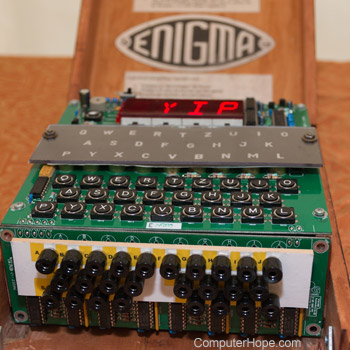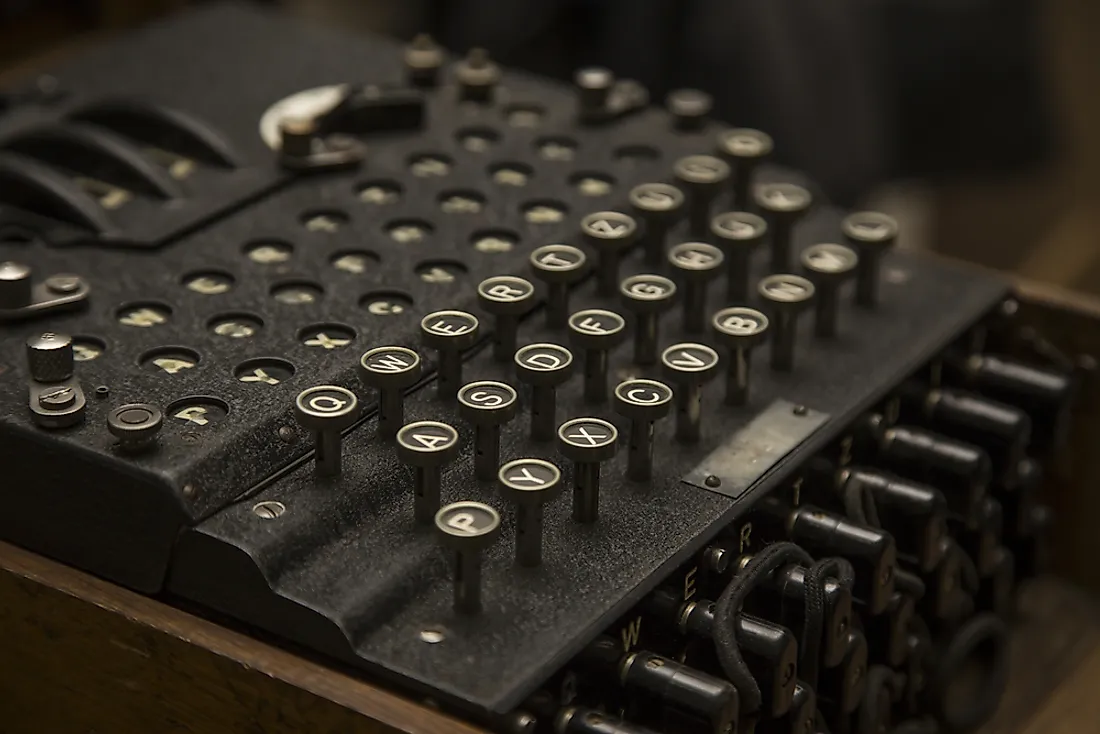


The core of the machine is the rotor assembly. It is powered by a battery in a compartment in the rear of the machine, or by using an external power source, and it operates at about 4.5 volts with low amperage. The Enigma itself just enciphers: it does not transmit. It is used by a trained operator to prepare a message, which is then sent by telegraphy via radio or similar means. The Enigma machine is an electromechanical unit for converting plaintext into ciphertext, or (in the process of decrypting a message prepared with another Enigma machine) ciphertext to plaintext. The German military machine felt that the Enigma I machine was, practically speaking, impervious to decryption, and best suited its needs: this assumption ultimately proved to be fatally flawed. While there are theoretically perfect ciphers, impervious to decryption (the best example of which is the one-time pad) these are cumbersome in practice: hard to distribute, ill suited to field operations, and slow in use. A prerequisite of modern warfare is secure communication indeed, communications must be not only secure, but also massively scalable, across multiple theaters and services. It is no coincidence that the interest on the part of the German military establishment in the Enigma machine parallels the rearmament of Germany, which grew apace in the early 1930s. The manufacturer’s name changed again in 1934, to Chiffriermaschinengesellschaft Heimsoeth und Rinke, and large quantities of Enigma I machines were manufactured and purchased by the Reichswehr and subsequently the Wehrmacht (many of these machines were produced by other firms under license).

The Enigma brand went through various recensions and improvements, culminating in the Enigma I (developed 1927) this was only available to the Reichswehr, who purchased exclusive rights to the machine. The first Enigma machine to incorporate removable rotors, a key development, was the Enigma D of 1926. A hulking unit, which included a printing engine, it lacked the necessary level of encryption for military use.

His firm, Scherbius and Ritter, built the first model of the Enigma machine, the Enigma A (of which, apparently, no specimen now exists) in 1923. These products were based on the work of Arthur Scherbius, then on the board of the company. They (together with several other European militaries) were especially interested in the Enigma brand of cipher machines manufactured by Chiffriermaschinen Aktiengesellschaft (ChiMaAG). The push towards reestablishing military power gained considerable momentum after Hitler and the NSDAP (Nazi) Party seized power in January of 1933.Īs early as 1926, the Reichswehr, the predecessor to the Wehrmacht, had been interested in advanced means of covert communication. Though Hitler only announced that Germany would rearm (in violation of the Treaty) in March of 1935, in reality rearmament had been covertly in progress almost before the ink was dry. NEW YORK, NY - After Germany’s defeat in the First World War, the provisions of the Treaty of Versailles of 28 June 1919, which included disarmament and the payment of major reparations, provoked a great deal of discontent in Germany.


 0 kommentar(er)
0 kommentar(er)
